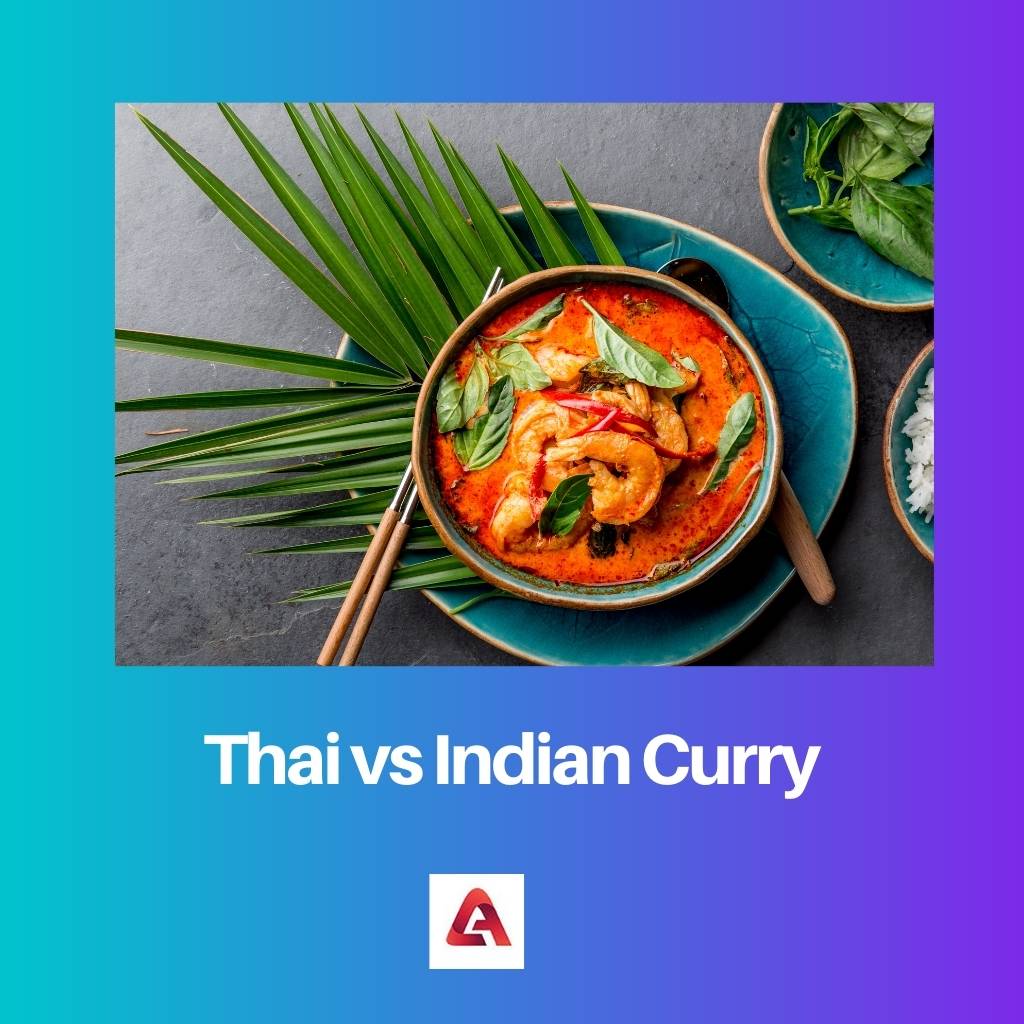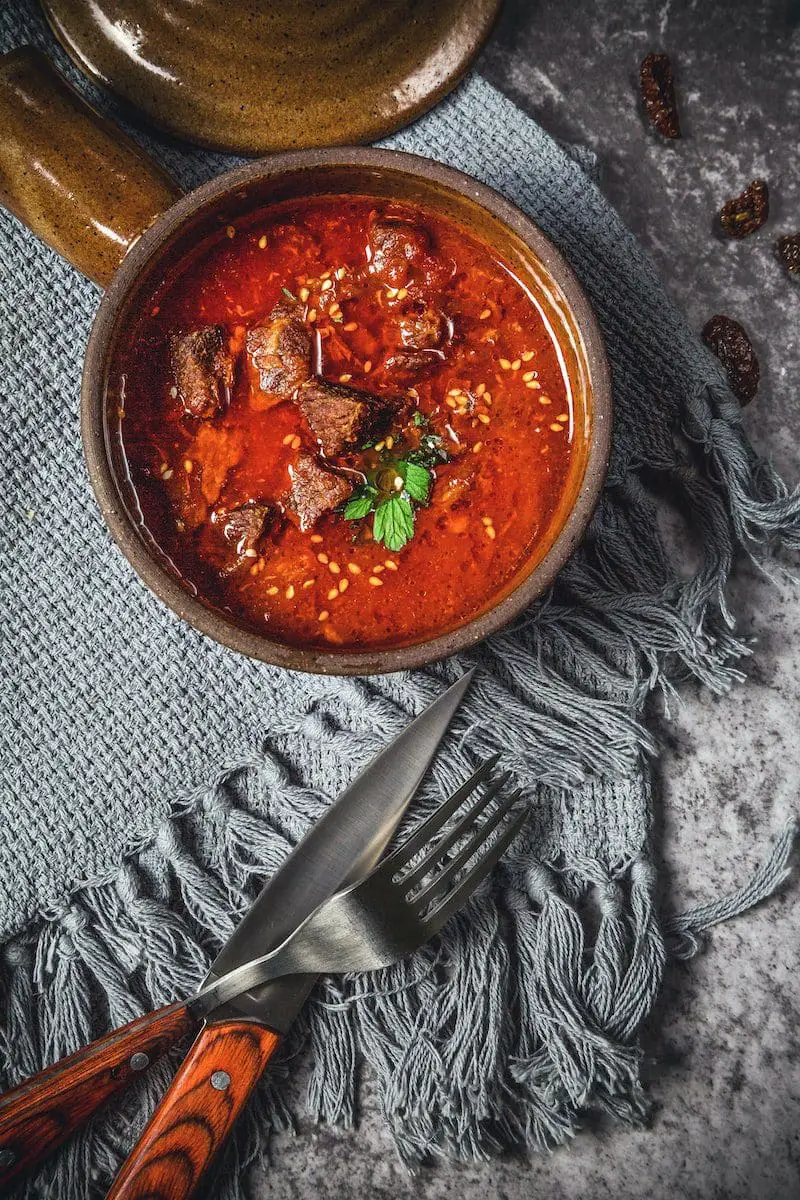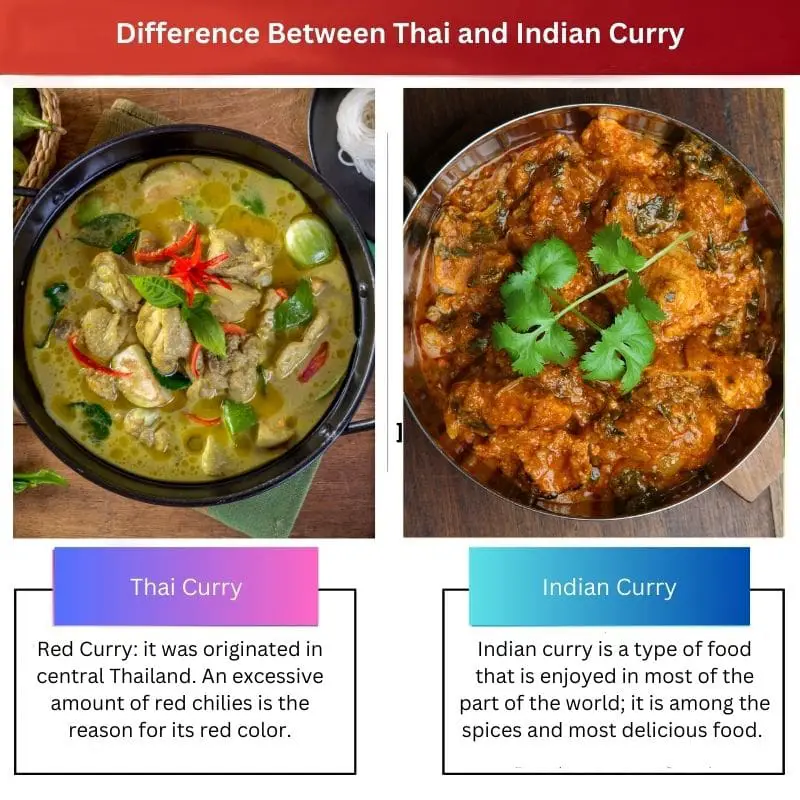There are so many dishes in the world that cannot be counted or listed collectively. All of them have their unique tastes, texture, spices, smell, and many other things.
Even several cuisines are famous due to their delicious and mouth-watering tastes. While every cuisine is unique in its own way, some dishes from different cuisines have a lot of similarities.
Among them are Indian and Thai Curry. Curry is said to be an Indian dish that contains herbs, spices, curry leaves, and many other things and has a liquid consistency.
Both Thai and Indian curries are similar but have different ingredients.
Key Takeaways
- Thai curry contains coconut milk, while Indian curry contains yogurt or cream.
- Thai curry is spicier than Indian curry.
- Thai curry uses more fresh herbs, while Indian curry uses more dry spices.
Thai vs Indian Curry
Thai curries are characterized by their vibrant, fresh flavors, lighter in terms of spices, and are made with coconut milk, lemongrass, galangal, and kaffir lime leaves. Indian curries are rich and complex, with a blend of aromatic spices such as cumin, coriander, turmeric, and garam masala.

Thai Curry is a dish from Thai cuisine. It is a type of curry with a soup consistency.
It is made with vegetables, meat, spices, herbs, etc. Some people used coconut water and fruits too. It is enjoyed as a soup in most of the world.
Fresh vegetables and fruits are added to it, along with lemongrass and basil. There are several varieties of Thai Curry that are enjoyed all over the world.
Indian curry is a curry made from all the Indian herbs and spices. It is enjoyed with rice or chappati the most.
It is rich in many nutritional contents and contains turmeric, cumin, mustard seeds, saffron, etc., in every part of India.
There is a variety of Indian curry that is enjoyed by the local people. It is considered to be one of the healthy meals.
Comparison Table
| Parameters of Comparison | Thai Curry | Indian Curry |
|---|---|---|
| Thickness | Lighter | Thicker |
| Spices | lemongrass and basil, etc. | turmeric, cumin, coriander, etc |
| Dairy Content | It does not contain a dairy ingredient. | The high amount of dairy ingredients. |
| Freshness | More fresh | Less fresh |
| Need for a side dish | Can be eaten alone | Need rice or some side dish |
What is Thai Curry?
Thai Curry comes in many varieties that include the following;
- Sweet Green Curry: it is the hottest curry of all types and is considered to be the most delicious due to the presence of lemon juice and coconut water. It contains eggplant, green chilies, and a green sauce. The green sauce is made with basil, green chilis, blue ginger, lime leaves, garlic, shallots, and turmeric. The color of the curry is green due to the sauce.
- Red Curry: it was originated in central Thailand. An excessive amount of red chilies is the reason for its red color. Apart from the chilies, garlic, blue ginger, and lemongrass are also added to it. After that, the paste is made by mixing all these ingredients with coconut milk.
- Yellow Curry: yellow curry comes in several varieties, such as coconut milk curry, gold curry, elephant curry, etc. Some of them are spicy, some are sour, and in some, coconut milk is added, along with cumin seeds and kaffir. But the common ingredient in all of them is Haldi or Turmeric Powder.
- Massaman Curry: it is extracted from Indian curry; the paste of this curry is made from red chilies, garlic, cardamom, lemongrass, ginger, etc. After that kaffir lime and coconut milk are added along with the topping of peanuts or potatoes.
- Panang Curry: it is mostly loved in central Thailand. It is less spicy as compared to other curries and is made from dried chilies, lemongrass, coconut milk, garlic, blue ginger, cumin, and then paste is made. It may or may not contain peanuts.

What is Indian Curry?
Indian curry is a type of food that is enjoyed in most parts of the world; it is among the spices and most delicious food. Curry itself is known to be originated in India. It can either be vegetarian or non-vegetarian, depending upon the personal choice.
India is a country with several regions and people with different tastes, for example, in India itself, most of the states have their special type of Curry, such as in south India, Sambar is the most enjoyed curry, while in the northern part, people prefer palak paneer or masala chicken both of these dishes have their types of curry with their different ingredients.
Indian curry is beneficial for health, too, as it contains several healthy spices and vegetables that help in bodily growth and make the immune system stronger.
Also, Indian Curry is an ideal choice for gaining weight as most of the curries are high in calories and fats. For example, non-vegetarian curries are high in calories due to meat or chicken and also contain dairy products.
Indian curry is not enjoyed by those who do not like spicy food or prefer simpler food.

Main Differences Between Thai and Indian Curry
- Both dishes have a different consistency. Thai Curry is like soup with a very light consistency that can be enjoyed without dipping it, whereas, in comparison, Indian Curry has a thicker consistency and is more like a stew.
- Both of them are prepaid using similar ingredients, while for Indian Curry, turmeric, cumin, coriander, hing, and garam masala plays an important role. In Thai curry, they are used along with lemongrass and basil to have a balance between spices and herbs that are not used in Indian Curry.
- Indian Curry contains a high amount of Dairy Products, such as ghee, curd, etc., to make it more creamy and smooth, whereas all these ingredients and sauces are not added to Thai Curry. Therefore it has less or no amount of dairy products.
- Indian curry is mostly dependent upon herbs and spices; very less of or no vegetables are added to it, whereas fresh vegetables play an important role in the case of Thai Curry. Therefore when compared, Thai curry is relatively fresher than Indian Curry.
- Due to its thick consistency, Indian Curry is not preferred to be eaten alone; it is always eaten with a side dish such as rice or chappati, whereas Thai Curry, light like a soup, can be enjoyed without any side dish.

- https://go.gale.com/ps/i.do?id=GALE%7CA324591022&sid=googleScholar&v=2.1&it=r&linkaccess=abs&issn=09731792&p=AONE&sw=w
- https://li01.tci-thaijo.org/index.php/anres/article/view/244890
- https://www.tandfonline.com/doi/abs/10.1080/10412905.1999.9701103
- https://link.springer.com/chapter/10.1057/9781137265159_10

The in-depth comparison of the layered flavors and ingredients in Thai and Indian curries provides a nuanced understanding of the culinary practices of each cuisine.
The detailed overview of the types of Thai curry, along with their specific ingredients, serves as an educational and engaging read.
Absolutely, the article does an exceptional job in presenting the diverse range of Thai curry varieties and their defining components.
I appreciate the comprehensive examination of the defining characteristics of Indian curry and the rich regional culinary diversity in India.
The article effectively differentiates between Thai and Indian curry while emphasizing the significance of the unique ingredients used in each cuisine.
The comparison table provided further simplifies the contrast between Thai and Indian curry, allowing readers to grasp the distinctions easily.
The article’s breakdown of the characteristics of Indian curry and the regional differences within India is quite enlightening.
The detailed description of the different varieties of Thai curry and Indian curry really helps in understanding the nuances of these dishes.
This article provides a very detailed and informative comparison between Indian and Thai curry, highlighting the key differences in ingredients, flavors, and textures of each.
I appreciate the thorough analysis of the various types of Thai and Indian curries, it really shows the depth of the comparison.
I completely agree. The information presented is quite comprehensive and well-researched.
The discussion of the regional variations of Indian curry and the diverse types of Thai curry offers a compelling exploration of the rich tradition of these cuisines.
I found the detailed examination of the specific ingredients and flavors of Thai and Indian curry to be intellectually stimulating and enriching.
The article effectively highlights the nuanced differences in the ingredients and flavors of Thai and Indian curry, enhancing appreciation for the intricacies of both cuisines.
The thorough examination of the ingredients and flavors of different Thai and Indian curries showcases the depth and complexity of each culinary tradition.
Agreed, the detailed expository of the intricate flavors and ingredients used in Thai and Indian curry is both educational and insightful.
The section explaining the different types of Thai curry and their specific ingredients provides a fascinating insight into the diversity of flavors in Thai cuisine.
I agree, it’s intriguing to learn about the varied elements that contribute to the unique taste profiles of Thai curry.
The comparison between Thai and Indian curry offers a comprehensive exploration of the distinct attributes that define each type of curry.